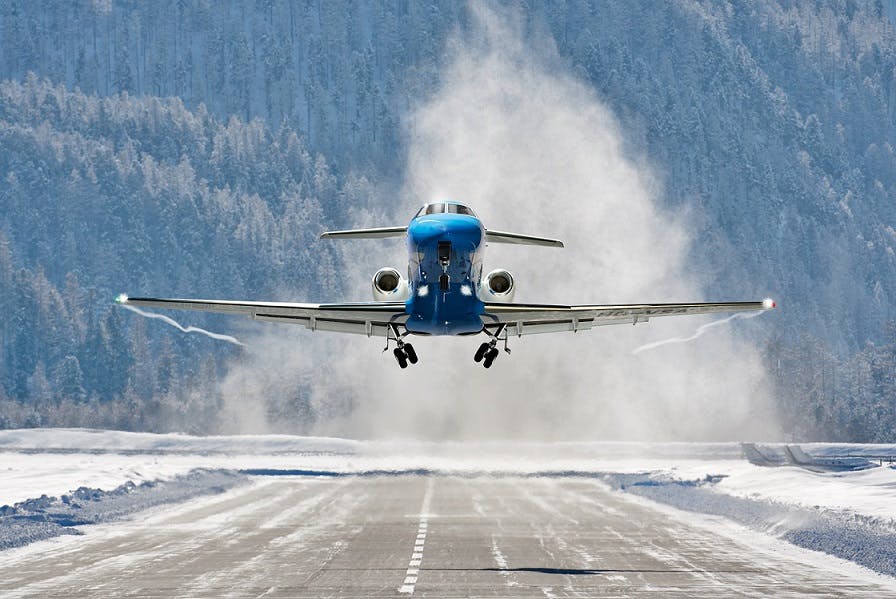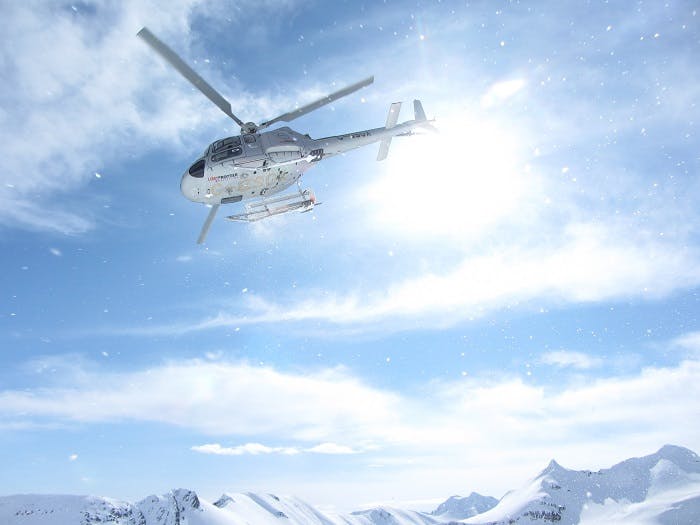Can a private jet fly in the snow?
With heavy snow and freezing temperatures currently forecast both in Northern Europe and the US East Coast, airline passengers may face flight cancellations and delays. Obviously such extreme winter conditions impact private jet charter too, but not to quite the same extent.
Private aviation is still able to keep passengers moving more easily, when airlines are frozen. Here are five reasons why.

1) Private jets can use airports less affected by the snow
In Europe, private jet charter flights can take their pick from 3,000 airports – ten times more than the 300 airports used by airlines. Snowfall and temperatures can vary considerably even over a relatively small area of the country, so this allows the pilot to switch to an airport than is less affected – not an option open to airlines.
And at smaller airports, snow clearing and de-icing can actually happen quicker than at major international hubs, as there is a much smaller area of taxiway and fewer aircraft to keep clear (plus many private jets are kept out of the cold in hangars which reduces de-icing requirements).
2) Private jet travel allows for flexible schedules
When you hire a private jet, you agree a departure time and route but, unlike airline flights, this plan is very flexible and either the customer or the pilot can change the schedule up until about two hours ahead of takeoff.
So bringing a flight forward when further snowfall is forecast – or switching the route to find ‘gaps’ in the weather or to avoid closed airports is a very real possibility. Airline schedules are simply unable to work like this – their only option is to cancel the flight.

3) You can avoid ground congestion and waiting times at the airport
Weather and aircraft delays usually create a backlog of travellers at the main airport terminal and can make your trip very stressful – whether your flight is directly affected or not.
But private jet customers do not use the main airport terminal. When you fly by private jet, you leave and arrive via a separate terminal, called a FBO – equipped with a quick security check and VIP lounges. There are no crowds, and you park right outside.
Usually you won’t spend long at the FBO as you can arrive 15 minutes before a flight. But even if you are delayed due to snow, you can stay warm, work or relax in the terminal until your aircraft is ready to depart.
4) Private jets can start moving again very quickly
Inevitably the most extreme of winter conditions will affect private jet charter flights. Safety is the no.1 consideration and there will be times when it is simply unsafe to fly due to extremes of temperatures or severe ice on runways. However the agility of private jet charter is a huge advantage when conditions begin to thaw.
As we have seen in previous cold winters, with enormous backlogs and so many aircraft out of position, airlines can take days to return to normal – leaving passengers stranded even after the snow is cleared. But with so much more flexibility, private jet flights can start operating almost immediately when it is safe to do so.
At PrivateFly, our platform is integrated with thousands of private aircraft worldwide, so we’re particularly well-placed to help passengers, finding available aircraft that are already in position, for last minute or urgent flights.

5) Helicopters offer additional agility
If an airport runway is completely covered with snow, it may still be possible to charter a helicopter, to reach your destination.
It is easier to clear snow from the relatively small area of a heliport, and helicopters have fewer restrictions on their take-off and landing zone. That’s one of the reasons why hiring a helicopter is often the best way to reach ski resorts.
Our expert Flight Team are available 24-hours for expert advice and the latest weather updates. Contact us or call +44 (0)20 7100 6960.
Related content

What happens after you book a flight with PrivateFly?

Our ten most memorable flights



